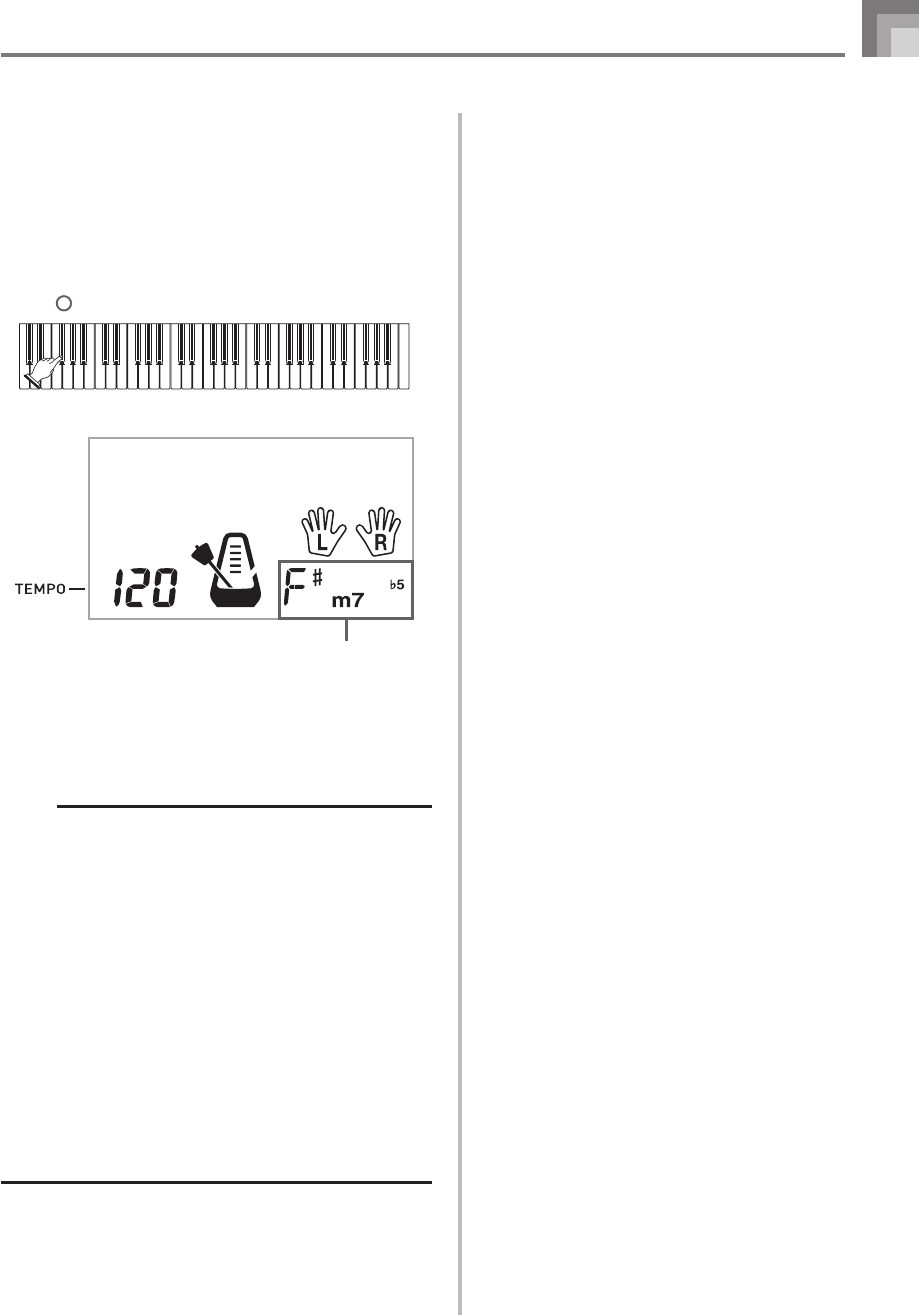
E-29
4
Press the accompaniment keyboard key that
corresponds to the root note of the chord.
• This causes the appropriate chord to sound.
• A dash appears in place of the chord name if the chord
cannot be recognized by the keyboard.
• To specify F
, for example, press the F
key.
<Example: F
m7-5>
5
Check to make sure that the chord name on the
display is the one you want. If it isn’t, repeat the
above from step 2.
NOTE
• You can also use the [+] and [–] buttons to change the
displayed chord name.
• The tone used to sound chords you play on the
accompaniment keyboard while using the Chord Book
is the same tone used by the accompaniment part of
the rhythm that was selected before you entered the
Chord Book mode. Depending on the rhythm that was
selected, some of the notes that make up a chord may
be omitted when you play the chord on the
accompaniment keyboard in the Chord Book Mode. This
is due to the internal chord conversion function,
arrangements, and polyphony limitations.
• You can press the START/STOP button to start play of
a rhythm pattern and then use the Chord Book to specify
a chord. This will cause the rhythm pattern to change in
accordance with the specified chord.
• Changing to a different rhythm pattern (rhythm number)
exits the Chord Book mode.
CDEFGABCDEF
C
E
F
A
B
C
E
Chord name
Ch o r d Bk
Using the Chord Book
CTK1100_e_27-35.p65 10.3.9, 5:14 PM29


















